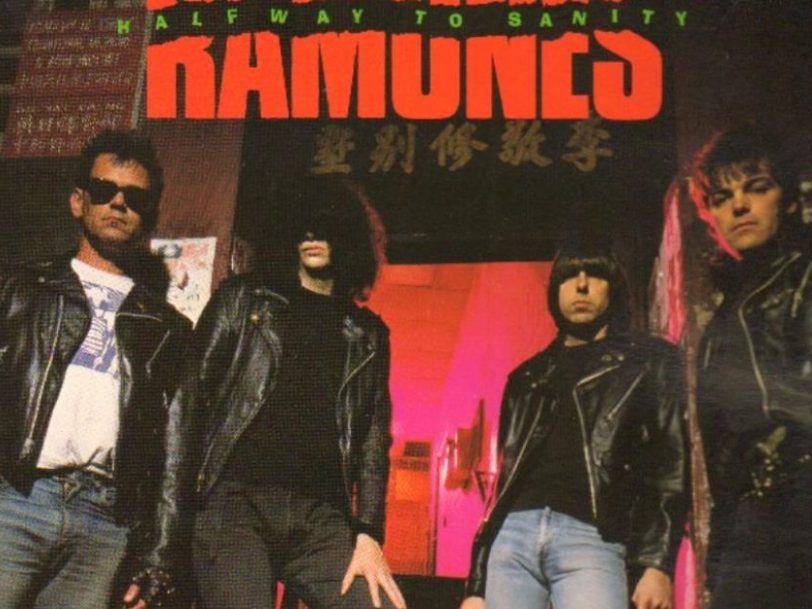Longevity was never one of punk’s scorched-earth ideals, yet some of the genre’s leading lights achieved it regardless. Sex Pistols imploded after releasing their debut album, Never Mind The Bollocks, Here’s The Sex Pistols, but contemporaries such as The Clash and The Jam tasted mainstream success during the early 80s. Elsewhere, Ramones – the band who arguably kick-started punk – morphed into its greatest survivors. A full decade after 1977’s Summer Of Hate and the release of Ramones’ legendary self-titled debut album, the group were still active and preparing to release their tenth album, Halfway To Sanity.
Listen to ‘Halfway To Sanity’ here.
Ramones had always been reluctant figureheads for punk. The group’s loud, fast approach to their craft connected with their UK peers, but they were anything but anarchists. Dyed-in-the-wool lovers of classic girl groups and all the British Invasion bands from the 60s, these New Yorkers knew their pop history inside out, and they desperately craved the stardom which never quite came their way.
“Joey thought it sounded better than the Ramones’ last record”
The group’s legacy was arguably secure by the time they took a tilt at the big time with 1980’s Phil Spector-produced End Of The Century, but chart success remained elusive. A critical renaissance followed 1984’s Too Tough To Die, but that didn’t translate into sales, and a similar fate befell 1986’s Animal Boy. By the time Ramones began working on their next album, Halfway To Sanity, they decided that working with a simpatico producer was more important than going all out for hits.
“Johnny [Ramone] heard some four-track thing I did in my parents’ basement, for this punk band [The Dirge], and he thought it sounded better than the Ramones’ last record,” producer Daniel Rey recalled in Everett True’s book, Hey Ho Let’s Go: The Story Of The Ramones.
“Plus, I got along with all four members, which was extremely unusual. Plus, they could get me very cheap because it was my first album. Hell, I would have done it for free!”
Also the guitarist with New York City band Shrapnel, Rey had already inveigled his way into Ramones’ camp, as he’d co-written several songs for the band, not least Too Tough To Die’s storming Daytime Dilemma (Dangers Of Love), with Joey Ramone. As such, Rey was a safe pair of hands and a good choice to man the console at a time when – yet again – relationships within the band were at a low ebb.




